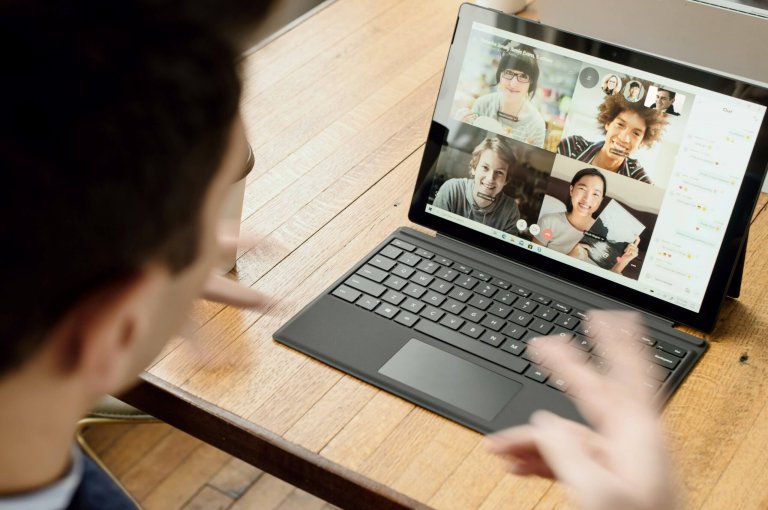Organizations update their employer brand on average every 11 months—more frequently than the 14 months reported in previous years. Why? We are living in a job market powered by candidates, which means securing top talent is becoming increasingly more difficult, time-consuming, and plain expensive. A little unsure what employer branding is and why it matters? We got you.
Side note: Pivot + Edge can help ease all three of the above with our Inside-Out Hiring Strategy. If you’re not much of a reader and want to just cut straight to it, click here.
If the 86 percent of HR professionals who believe recruiting is becoming more like marketing can’t convince you to invest in your company’s employer branding, let the benefits do the heavy lifting.
Cultivating a powerful employer brand is the best way to:
- Attract the people who are going to help your company reach its goals
- Reduce the emphasis on compensation and allow the company culture to serve as a primary motivator for candidates
- Reduce hiring time and create a market-ready strategy for any new hire
- Create a cohesive work culture where every employee feels respected and valued
- Increase employee commitment by 20 percent
- Improve employer productivity and sense of purpose
- Increase the likelihood of employees becoming advocates for your company by up to 50 percent
- Retain your best people who will push your business’ vision forward
As a startup, the odds are stacked against you. There are a myriad of challenges your organization will have to face. Perhaps the most shocking challenge is that 23 percent of startups report team issues being a key ingredient to failure. Once you hire the wrong person, your company’s internal culture becomes damaged. It will be a lot harder to remedy the situation.
Hence, the need to be proactive with your branding and develop an effective user funnel. A well-developed employer brand will entice your best people to progress through the following stages: attraction, recruitment, retention, commitment, and advocacy. Though it may feel like a lot of work when just starting out (or revamping your employer branding exercise), this funnel will reap benefits by returning more candidates like your best employees.
Sometimes reconstructing your employer brand could mean conducting employee interviews and reevaluating the company’s mission, but other times your employer brand just needs a line rewritten here and there.
For example, let’s take the hit American 1990s TV series Full House. When screenwriter Jeff Franklin pitched the idea for the sitcom in the mid-80s, it took about 3 years to FULLY (pun intended) develop. We aren’t saying starting your employer brand from scratch will take that long to produce – only six weeks with the help of our team at Pivot + Edge. Starting from scratch or doing an overhaul, although sometimes necessary, can take more time. However, sometimes all you need to do is dust off your branding and make a few updates to reflect the current state of your team, your brand, and its culture. Think Fuller House — the original Full House remade itself into the 2020s show Fuller House by respecting the original branding and coming up with innovative ways to make it fit the modern age. Your employer brand is still based on the same original concept or values of your company, but it needs to be updated to speak to a new audience.
So, which is your startup?
Full House — in need of a full development from start to finish, or Fuller House — in need of some updated messaging and a few new quotes, and you’re good to go. If you’re still wondering, use the following list to evaluate your startup. If one or more applies to you, it is time to revisit your startup’s branding strategy to ensure that you are hiring the most skilled candidates for your organization.
Here are 5 telltale signs that it is time to revitalize your employer brand:
1 Your company has an image problem.
If your company has experienced a high turnover rate in recent months or has been receiving negative reviews, it is probably time to revisit your employer brand. Why? A disconnect exists between what your employer brand is conveying to interested candidates and the internal atmosphere of your company could be the root of the problem. The best company branding addresses the candidate’s questions about what it is like to work for you before they even have to ask.
Example: You notice a trend of employees departing because they find the culture is too fast-paced.
Solution: You should ensure your talent-facing messaging highlights the fast-paced nature of your company culture and the demand for candidates to want to work in that environment.
There’s no need to sugarcoat anything. The more the candidate gets to know your company before joining the team, the more likely they’re to be the right fit. We all know the hiring process isn’t cheap. With a strong employer brand, you can reduce turnover in your startup by as much as 28 percent, saving you time and money in the long run!
2 Your consumer brand or offering has changed.
Your company’s employer branding should connect to your organization’s overall mission. If the company’s overall vision has changed, then the goals of its employees have likely changed.
Example: Your company recently received an influx of funding, so you need to grow quickly.
Solution: Ensure talent-facing messaging is clear about the new growth trajectory of your company. Highlight the need for candidates who want to grow in their field, have a passion for what you do, and are ready to wear many hats.
Think of your branding as the road map employees (or candidates) use to determine how to succeed within your company. The clearer the direction of your business and the candidates’ role within the team is, the more likely they are to be productive and engaged… and highly engaged teams achieve 21 percent greater profitability, according to Gallup.
3 Your employer brand is difficult to explain.
Having an employer brand is one thing, but understanding it is another. If you have a hard time explaining your branding, chances are your employees are having a tough time understanding it as well. While developing your employer brand, you should remain authentic to what the actual working partnership will be like when a new recruit joins (click here for what candidates want to know about your company).
Example: You crafted your employer brand when your team was first starting out. You involved your C-Suite staff and haven’t revisited it since.
Solution: Reevaluate your branding and include more individuals from various positions within your organization. As a C-level, you are only one part of the equation. Therefore, you must ask your employees (and even candidates) their opinion on what it’s like working (or applying) for the company.
If your employees feel their voices are being heard, they will be 4.6 times more likely to perform their best work. A good indicator of your branding quality is if you’re getting employee referrals. Those advocates’ voices should be apparent in your branding through their employee stories, but also through the overall messaging.
4 You’re not attracting the right candidates.
The purpose of an employer brand is to attract and maintain the best people to boost your company’s success. If you are experiencing high turnover, company friction, or employee disengagement, you’ve hired the wrong people.
Example: You have employee turnover every few months, and there is a lot of internal personnel issues.
Solution: Work on your employer brand to reflect your best employees and start attracting similar, like-minded individuals. Encourage employee referrals and start building your team with more people, like your best employees.
A properly developed employer brand will create a constant flow into your talent network—people waiting to join your team as it scales. If you heavily rely on traditional headhunting or paid efforts in your search for the next top-notch team members, it is likely your branding is not speaking to the ideal candidates. While not every resume that lands in your inbox will be the perfect fit, if the quality of candidates are way off, then it’s time to try something different.
5 It’s time for a change.
Maybe it’s only been a year or two, but these days that means you may not have changed the way you attract candidates to your company since before the pandemic. Employees do not view company benefits, perks, or culture through the same lens as they did pre-pandemic.
Example: Your talent-facing messaging still talks about your awesome ping pong table and on-site gym.
Solution: update your message to reflect your new workplace culture—post-pandemic. Are there remote work options? Do you offer flexible schedules? Etc…
Ensure your messaging changes as your company culture and workplace dynamics (ie hybrid offices or remote work options) evolve and as your team grows. As the job market shifts, competition changes, technology develops and your startup flourishes, it’s vital you revisit and revamp your employer brand to reflect your company’s current state.
Evolving Your Employer Brand
Overall, your employer brand should be a living, breathing, entity. It is good practice to set an annual exercise to review, revamp, and reinforce your talent-facing messaging both internally and externally. Along with listening to your employees and analyzing hiring trends, we highly recommend getting unbiased input. Pivot + Edge works with startups just like yours to provide industry insight and to develop your employer branding strategy for the year ahead. To learn more, download your free copy of The Ultimate Guide for Startup Employer Branding.







